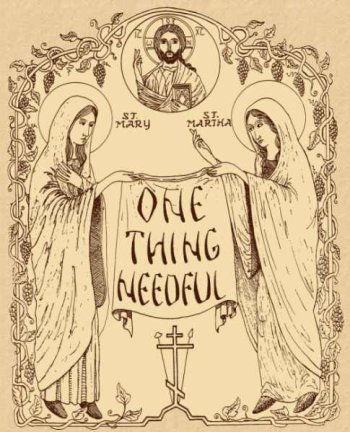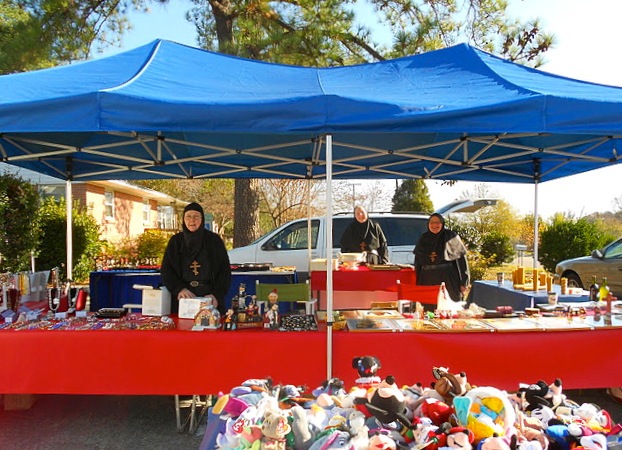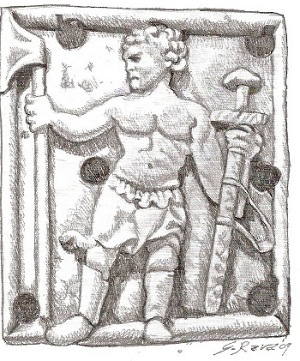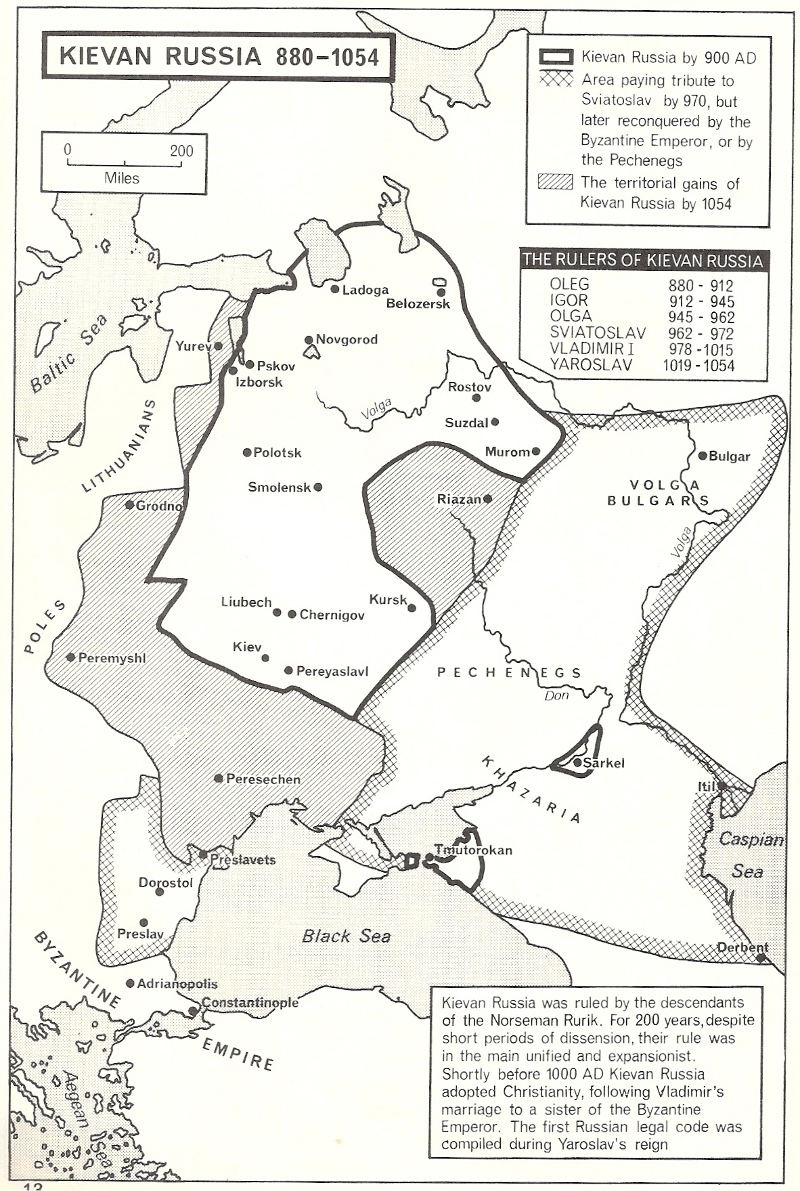








Orthodox Church in America
Diocese of the South
65 Spinner Lane
Wagener, SC 29164 - USA
telephone: 803-564-6894
email address:
Mary_MarthaM@pbtcomm.net


         Saints Mary & Martha
Orthodox Monastery
Orthodox Church in America Diocese of the South 65 Spinner Lane Wagener, SC 29164 - USA telephone: 803-564-6894 email address: Mary_MarthaM@pbtcomm.net |
  |
|
See old newsletters
ONE THING NEEDFUL
WINTER 2012 UNIQUELY CALLED
As daylight lengthens and we reflect on the Light of the world Who was born for our sake and has manifested Himself and the Trinity at His baptism in the Jordan, there is so much for which to be grateful. During these holidays, visitors abounded at the monastery and one query was “how is your recruiting going?” The quick response was “this is not the military – no perks to offer!” However, the question and response have evoked some thoughts. Monastic life is a wonderful gift of God. He calls one out of the ordinary way to live more closely focused on Him in Himself and in His people. The life provides an environment conducive to achieving a loving relationship with God and community. (Who need perks?) Each of us is uniquely called by God to know Him and to love Him. He designs what is best for us and we need only to follow His lead. He asks us to respond in love to each person/incident in our daily living. Each moment is filled with God if we but have eyes to see His light. May this year of 2012 find each of us walking where our good God leads, lighting our way in His love, peace, and joy.  IRS Letters  MONASTERY NEWS
The response to our last newsletter has been rather overwhelming. Just when we thought that we may have spoken too soon, we received numerous confirmations that our decision to build was the right one. So many of you have shared with us your joy in our finally starting to get started. (Yes, that’s redundant.) It is truly encouraging to be told that they are glad we are here, that they want us to succeed, and that they pray for us and support us. This and more has motivated us to keep struggling. As you can see from our current building fund total, a rather goodly number of “all you all” have contributed to it. In addition, we were offered and accepted several Liturgical items: a brass chandelier with a three-bar cross, pews with three-bar crosses on the ends which will fit nicely around the walls of the chapel, four brass candle stands, an icon of the Dormition, an icon of the Theotokos of the Sign, and four music stands. Having no place left to store anything, we were offered the use of a friend’s garage to store the items listed above, excluding the icons. Not everything is going smoothly, but that is to be expected. While we had hoped to have some updated drawings of the building plans to share with you, they are not ready yet. When they are ready, we will post them on our web site and publish them in our newsletter. We interpret all this and more as God’s affirmation. About two years ago, we came to the realization that we needed a tractor to accomplish some of the work on our acreage. About two months ago, we started looking at used tractors and became aware of how little we knew about tractors, and that it would be best if the tractor could be kept sheltered from the weather. This realization, the necessity for more storage area, and the need to garage the pick-up truck, has led to our having a 70’ long, 12’ deep, and 12’ tall, metal utility building constructed on a concrete slab. This building should last for many years and be in continuous use. The building fund adds up in many ways -- from your gifts, to our saving from what we have earned, to selling items given to us, to the picking up of coins off the street. Having received so many items for the flea market, we decided to go to the Barnyard Flea Market again. This time we raised $171.95 for the building fund. The first Saturday in December was Saint Nicholas Festival in which we raised $1223.65 for the building fund. Everyone there seemed to enjoy themselves. Below is a picture of the three of us under our tent. In the foreground is a table laden with stuffed toys. Because we receive items that are too good for the flea market, we now share a booth with two other women at a consignment shop.  The weather was so dry and hot last year, that, even with irrigation, the elderberries did not produce enough to make three bottles of wine, few pears were not brown in the middle, and the grape harvest was diminished. No matter what we did, the vegetable garden just would not produced much. God willing, this year will be better. Our last beehive, which had been really strong until recently lost its queen, was not able to reproduce another, and simply died out. An old beekeeper figured out the problem and told us that there was nothing we could have done about it. This spring, we will start again with two Russian queen bees and two pounds of bees each. The Camellia sasanquas and Camellia japonicas have been blooming royally. This year time has been devoted to identifying and documenting the variety and where it is planted. It is amazing how many varieties we have planted in the fifteen plus years we have been here. As they mature and grow to be lush, green beauties, we find ourselves looking forward to each one blooming in their turn from October through March. On Friday, December 9th, Patricia Pickering from Saint Mary of Egypt Orthodox Church in Norcross, Georgia was buried here. She was a pharmacists who was noted as having a heart of gold and hands of steel. A few weeks later, we buried Dušan Ćuk who died in the early morning hours of January 1st. He was a member of Saint Elizabeth the New Martyr Orthodox Church in West Columbia, South Carolina. Dušan, originally from Sisik, Yugoslavia (Serbia), is the only person buried here who has been listed in the Obituaries of the Wagener Monthly. Being a talented woodworker, he made our Tabernacle, the censor stand, Processional Cross and fans, and, with the help of Sergei, another woodworker, the seven-branch candle stand. May their memory be eternal! NOTE: We were sent a tin of cookies as a Christmas present. There was nothing on the box or in the box to let us know who sent them. Whoever you are, thank you.  CHRISTIANITY IN KIEV BEFORE VLADIMIR THE GREAT Part 3 As with any town on a trade route, Kiev conceivably had a house church where the small number of Christians gathered to worship in the early centuries. Throughout this time and beyond, a great sea of paganism ebbed and flowed in and around Kiev. Then the annals of history mentioned The Church of the Prophet Elias which seemed to have been the center for Christian worship in Kiev for a century or more. Precious little documentation exists as to its beginnings, its endings, or anything in between. It was probably built of wood, as that was the primary building material used in Kiev at the time. Conceivably, this church was built by Christian traders and missionaries who settled in Kiev before Askold and Dir’s rule (c. 858-882). However, it is more probable that it was built by the Christian Varangians after the return of Princes Askold and Dir under the direction of the bishop whom Patriarch Photius or Patriarch Ignatius sent to Kiev. Constantine Porphyrogenitus and other Greek historians mention this church and record that many converts were made to Christianity when the Bishop of Kiev publicly threw a book of the Gospels into a fire, waited awhile, and pulled the unconsumed Gospel Book out of the flames. For the Christians, the Prophet Elias became the patron saint of Kiev. During Prince Igor’s reign (912-945), Byzantine ambassadors made note of this church in their reports. It is recorded that Princess Olga worshipped there after her conversion to Orthodox Christianity. It is not known if The Church of the Prophet Elias existed in the time of Vladimir the Great. Due to its wooden construction, it was most likely consumed during one of the many fires that occurred in Kiev. While Kiev was cut off from the Dnieper River route to the south, Prince Oleg (880-912) utilized the overland route through what is Bulgaria to Constantinople to maintain diplomatic and ecclesiastical relationships. As early as 891, almost a century before the conversion of Russia at the command of Vladimir the Great, the Metropolitan See of Russia is listed in the Codinus’ Catalogue of Sees subject to the Patriarch of Constantinople.  Carving of a Varangian Guardsman from a 10th-11th century ivory casket The Byzantine-Russian treaties of 860 with Prince Askold, and of 907 and 911 with Prince Oleg document that the Varangian and Rus soldiers made their pledge on their swords in the pagan manner. After the treaty of 911, Prince Oleg and his military remained pagans. The trade route was opened, and the Byzantines hired many Russians (the Norse having melded with the Slavs by the end of the tenth century) as mercenaries and gave them favorable status if they became Christians. By the time of the Byzantine-Russian treaty with Prince Igor in 944, some of the soldiers in the Kievan army were Christians. The Primary Chronicle (Tale of Bygone Years) recounts that the Christian soldiers swore the oath of peace in The Church of the Prophet Elias, while the pagans swore the oath of peace on their weapons at the sanctuary of Perun, their god of thunder and lightning. According to the Joakimov Chronicle, Prince Oleg, being the guardian of Prince Igor, sought out and found a wife for Igor among the Izborsk princes, a Slavic ruling family of the Pskov area. In 903, Igor married Olga (890-969). Prince Igor succeeded Prince Oleg as ruler of the Kievan realm from 912 to 945. During his reign, he dealt with major opposition against the Christians from the pagan majority within his realm and from the Khazar Jews to the east. When Prince Igor attempted to collect tribute from the Drevlyans for the second time in the same month, they killed him. As regent, their son Sviatoslav being three, Olga exacted revenge on the Drevlyans as only a strongwilled, pagan woman could. Her subjects referred to her as “Olga the Wise”, and her reputation for fierceness, shrewdness, and intellectual prowess spread far and wide. Princess Olga (reigned 945-962) skillfully took the reigns of power to improve the well being
of her people both domestically and civilly. While she owned a vast amount of
land herself, upon Igor’s death, she became the largest landowner in her principality.
The chroniclers wrote extensively about her administrative changes.
In the summer of 954, Olga journeyed to Constantinople. It was her wish to develop better Russo-Byzantine dialogue and trade. Arriving at Constantinople with a great fleet of ships caused the Byzantines, whom the Russians looked upon as haughty, to take notice and acknowledge that Princess Olga was a woman of power with a commanding presence. True to Byzantine form, they welcomed her, gave her a tour of their magnificent city , and provided regal accommodations for her and her entourage. Nothing is known of Olga’s private reasons for becoming a Christian. Given the hostility towards Christians in her own country, she probably felt much safer being baptized and chrismated in Constantinople, hence a third reason for the journey. Being hopeful that such a woman would want to become an Orthodox Christian, the Byzantines accompanied Olga as she attended Liturgy and other services at Hagia Sophia, Blachernae, and other awe-inspiring churches. In a small, private ceremony, Patriarch Theophylactus (933-957) baptized and chrismated Olga and Malusha, who became the future wife of her son. Olga received the Christian name Helena, and the Emperor Constantine VII Porphyrogenitos (912-959) became her godfather. Although the emperor thoroughly disliked the Russians, he was impressed with Olga’s beauty, intelligence, wisdom, and spirituality. He bestowed upon her the gifts of a jewel-studded gold plate, a piece of the cross of Christ, and a relic of St. Clement. At the conclusion of Olga’s baptism and chrismation, Patriarch Theophylactus prophesied, “Blessed are you among Russian women, for you have forsaken the darkness and have loved the Light. The Russian people shall bless you in all the future generations, from your grandson and great-grandson to your furthermost descendants.” In later years, the Monk Nestor wrote that while the patriarch instructed her in the Orthodox Faith, its dogmas, rules of fasting, and on prayer, charity, and chastity, “She, however, bowed her head and stood, literally like a sponge absorbing water, listening to the teaching, and bowing down to the Patriarch, she said, ‘By your prayers, O Master, let me be preserved from the wiles of enemies.’” Many of the proceedings during Olga’s visit are recorded in Emperor Constantine VII Porphyrogenitos’ work About the Ceremonies of the Byzantine Court. One note of interest occurred at the state dinner in the Hall of Justinian. Four women dined together: Saint Olga, the grandmother of Saint Vladimir and the great grandmother of Saints Boris and Gleb; Malusha, a prophetess, the future wife of Sviatoslav I, and Saint Vladimir’s mother; the Empress Helen, the mother of Anna who would become the Christian wife of Saint Vladimir; and, Theophano, the infamous daughter-in-law of the Empress Helen. Discerning that Christianity would provide a better way of life for her people, Olga diligently strove to evangelize them and built many churches in Kievan Rus. The “pogosti” she had instituted became some of the first places where she had churches erected. The Church of St. Nicholas was built over the grave of Askold. Over Dir’s grave, she had the Church of Holy Wisdom constructed and placed the most precious wood of the cross therein. At Vytebsk near the Divina River, the Church of the Annunciation for the Most Holy Theotokos was built. Having seen a beam of light point out a place in her home town of Pskov, she ordered the construction of the Church of the Holy Life-Creating Trinity there. In 957, Olga made a second journey to Constantinople to request a Byzantine princess for her son and a bishop to restore the Metropolitan See in Kiev. She received neither. Upon returning to Kiev, she sent emissaries to King Otto I of the German Empire requesting a bishop for Kiev. Financing this missionary effort, King Otto I sent Bishop Libutius, who arrived late in the year 960 and died on March 15, 961. Later that year, Adalbert of Trier was consecrated a bishop and arrived at Kiev with a number of priests to help with the conversion of the Russians to Christianity. Becoming frustrated with the strong pagan opposition to Christianity in Kiev, Bishop Adalbert and his priests left. Many of the German priests were killed on their return home, while Bishop Adalbert and the remaining priests barely made it back alive.
Although Sviatoslav ruled from 962-972, he spent most of his time leading military campaigns against the Khazars in the east whose empire he destroyed, the Volga and Danube Bulgars, the Pechenegs, and the Byzantines. Therefore the governance of Kievan Rus devolved to Olga. Christianizing his realm was not up for consideration at this time. However, in his absence, Olga was able to influence her grandsons, Yarapolk, Oleg, and Vladimir. The Byzantines, being masters of subterfuge, bribes, secretly supplying armaments, and other covert acts, wanted to thwart Kievan Rus’ rise to power and acquisition of wealth and territory. This may well be the reason Kiev was not given its own bishop and why the Pechenegs, who resided south of Kiev, laid siege to the city in the Spring of 969. Olga skillfully headed the defense of Kiev, but the siege was long. The Pechenegs’ force was great, well armed and supplied. When General Pretich sent his “druzhina” (personal guard), the Pechenegs were pushed back. It was then that Olga could send a message to Sviatoslav, pleading for help and admonishing him for his neglect of his family and his people. Swiftly, Sviatoslav and his army arrived and defeated the Pechenegs. Sensing that her end in this life was near, Olga, now 79 years of age and ill, persuaded her son to stay in Kiev till she died. On July 11, 969, Olga reposed without seeing the conversion of her people to Christ. She left strict instructions that there was to be no burial mound and no funeral feast in the manner of the pagans, but that she was to be buried according the Orthodox Christian funeral rite by Father Gregory, her longtime confessor and spiritual father. Before her repose, she prophesied, “God’s will be done. If it pleases God to have mercy on my native Kievan Rus, then they shall turn their hearts to God, just as I have received this gift.” Saint Olga worked many miracles after her death, and her relics remained incorrupt for the next hundred years.  Atlas of Russian History, Page 12 Before Sviatoslav returned to his military campaigns, he divided Kievan Rus between his three sons: Yarapolk received Kiev, Oleg - Dereva, and Vladimir - Novgorod. In 972, as Sviatoslav’s boat approached the cataracts of the Dnieper River, he was ambushed and killed by a band of Pechenegs. Civil war broke out between Yarapolk and Oleg, in which Oleg was killed in 977. (It has been purported that Yarapolk was baptized a Christian according to the Latin rite.) Vladimir fled to Scandinavia, raised an army of Varangians, and returned to defeat Yarapolk. Vladimir led a major resurgence of paganism during the first years of his reign (978-1015). However, it was not long before Prince Vladimir knew that he had to unite his kingdom under one faith instead of a pantheon of pagan gods. He sent out envoys to investigate Latin Christianity in Rome, Orthodox Christianity in Constantinople, Judaism, and Islam. Having inquired about the Orthodox Faith and attended Divine Liturgy at Hagia Sophia in Constantinople, his envoys returned to Kiev and said, “We know not whether we were in heaven or on earth.” After hearing the others report, these envoys made an additional argument in favor of Orthodox Christianity, “If the Greek faith were evil, it would not have been adopted by your grandmother Olga, who was wiser than all other men.” On the day of the Baptism of Rus in 988, Vladimir the Great, said of his grandmother, Olga, “The sons of Rus bless you, and, also the generations of your descendants.” Atlas of Russian History, Martin Gilbert, Dorset Press, New York, 1984 Byzantine Missions among the Slaves, Frances Dvornik, Rutgers University Press, New Brunswick, 1970 Entry of the Slaves into Christendom: An Introduction to the Medieval History of the Slaves, A. P. Vlasto, Cambridge University Press, Cambridge, 1970 History of Russia, George Vernadsky & Michael Karpovich, Yale University Press, New Haven, 1943 History of the Church of Russia, A. N. Mouravieff, Translated by Rev. R. W. Blackmore, 1841 Kievan Russia, George Vernadsky, Yale University Press, New Haven, 1973 Medieval Russia’s Epics, Chronicles, and Tales, Edited and Translated by Serge A. Zenkovskys, Meridian, New York, 1974 The Varangian Guard 988-1453, Men-at-Arms Series, Raffaele D’Amato, Osprey Publishing, Oxford, 2010 http://en.wikipedia.org/wiki/Klavdiy_Lebedev |
  
March 3rd at 9am
Pilgrimage -- April 28th, 8am to 4 pm May 12 th at 9am June 9th at 9am July 7th at 9am August 11 th at 9am Matins starts at 8am 
 FROM MARTHA'S KITCHEN OATMEAL-RAISIN COOKIES LENTEN Style In the ten years since we published this recipe, many who have eaten our oatmeal-raisin cookies here also received the recipe upon request. By popular demand, we are reprinting it.
1 cup vegetable oil Mix the above together with a wooden spoon, then add
1½ cups flour Mix thoroughly and fold in 2 cups raisins Refrigerate for at least an hour, overnight is fine, too. Drop by teaspoonful onto greased cookie sheet and bake for about 10 minutes at 350° F. Makes about 60 cookies. These cookies keep well in the freezer or in a tin if the weather is not hot. |